| Contents [0/55] |
| Object-Oriented Design & Patterns [1/55] |

| Chapter Topics [2/55] |
| Adapters [3/55] |
file:horstmann/ch10_adapter/IconAdapter.java [source] [doc-public] [doc-private]
01
02
03
04
05
06
07
08
09
10
11
12
13
14
15
16
17
18
19
20
21
22
23
24
25
26
27
28
29
30
31
32
33
34
35
file:horstmann/ch10_adapter/IconAdapterTester.java [source] [doc-public] [doc-private]
01
02
03
04
05
06
07
08
09
10
11
12
13
14
15
16
17
18
19
20
21
22
23
24
25
| The ADAPTER Pattern [4/55] |
| The ADAPTER Pattern [5/55] |
| The ADAPTER Pattern [6/55] |
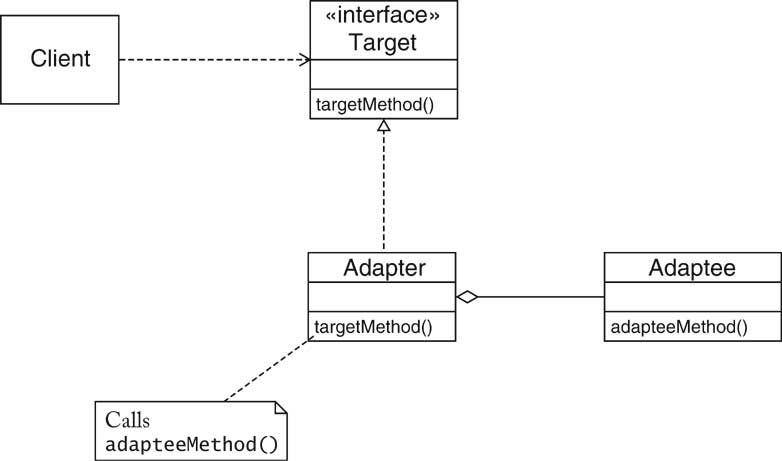
| The ADAPTER Pattern [7/55] |
| Name in
Design Pattern |
Actual Name
(Icon->Component) |
| Adaptee |
Icon |
| Target |
JComponent |
| Adapter |
IconAdapter |
| Client |
The class that wants to add
icons into a container |
|
targetMethod() |
paintComponent(), getPreferredSize() |
|
adapteeMethod() |
paintIcon(), getIconWidth(), getIconHeight() |
| The ADAPTER Pattern [8/55] |
| The ADAPTER Pattern [9/55] |
| Name in
Design Pattern |
Actual Name
(Stream->Reader) |
| Adaptee |
InputStream |
| Target |
Reader |
| Adapter |
InputStreamReader |
| Client |
The class that wants to read
text from an input stream |
|
targetMethod() |
read
(reading a character) |
|
adapteeMethod() |
read (reading a byte) |
| User Interface Actions [10/55] |
| User Interface Actions [11/55] |
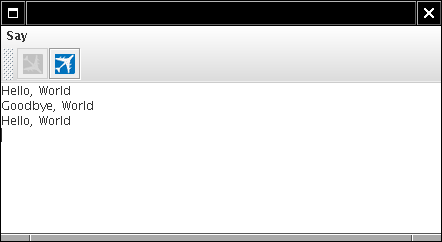
| The Action Interface Type [12/55] |
| The Action Interface Type [13/55] |
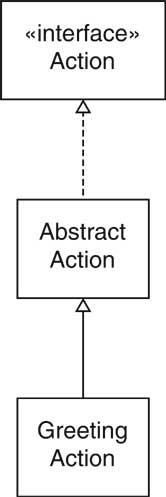
| Action Example [14/55] |
file:horstmann/ch10_command/CommandTester.java [source] [doc-public] [doc-private]
01
02
03
04
05
06
07
08
09
10
11
12
13
14
15
16
17
18
19
20
21
22
23
24
25
26
27
28
29
30
31
32
33
34
35
36
37
38
39
40
41
42
43
44
45
46
47
48
49
50
51
52
53
54
55
56
57
58
file:horstmann/ch10_command/GreetingAction.java [source] [doc-public] [doc-private]
01
02
03
04
05
06
07
08
09
10
11
12
13
14
15
16
17
18
19
20
21
22
23
24
25
26
27
28
29
30
31
32
33
34
35
36
37
38
39
40
41
42
43
44
45
46
47
48
49
50
51
| The COMMAND Pattern [15/55] |
| The COMMAND Pattern [16/55] |
| The COMMAND Pattern [17/55] |
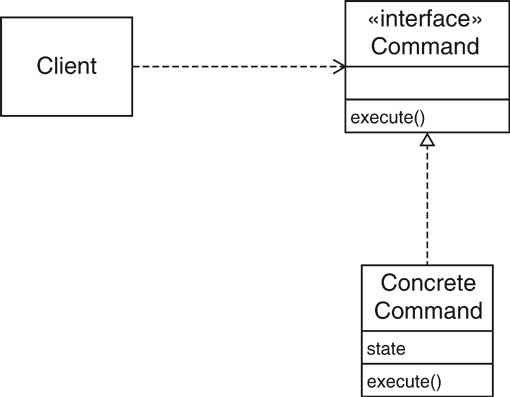
| The COMMAND Pattern [18/55] |
| Name in
Design Pattern |
Actual Name
(Swing actions) |
| Command |
Action |
|
ConcreteCommand |
subclass of AbstractAction |
|
execute() |
actionPerformed() |
| state |
name and icon |
| Factory Methods [19/55] |
| The FACTORY METHOD Pattern [20/55] |
| The FACTORY METHOD Pattern [21/55] |
| The FACTORY METHOD Pattern [22/55] |
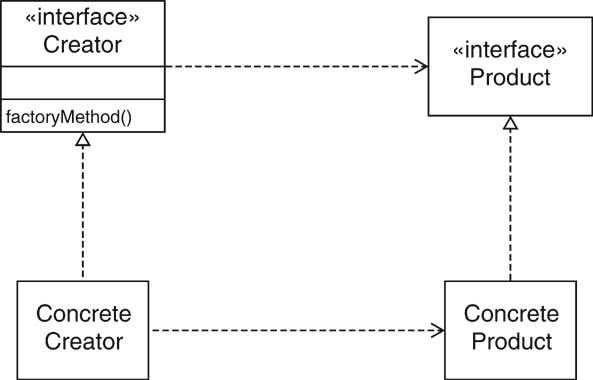
| The FACTORY METHOD Pattern [23/55] |
| Name in
Design Pattern |
Actual Name
(iterator) |
| Creator |
Collection |
|
ConcreteCreator |
A subclass of Collection |
|
factoryMethod() |
iterator() |
| Product |
Iterator |
|
ConcreteProduct |
A subclass of Iterator
(which is often anonymous) |
| Not a FACTORY METHOD [24/55] |
| Proxies [25/55] |
| Deferred Image Loading [26/55] |
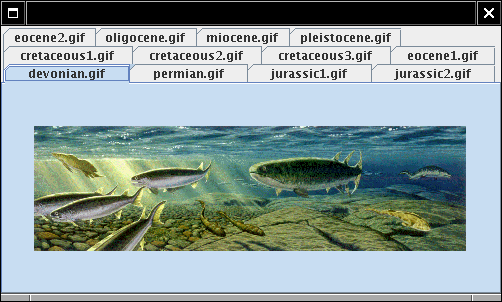
| Deferred Image Loading [27/55] |
| Proxies [28/55] |
file:horstmann/ch10_proxy/ImageProxy.java [source] [doc-public] [doc-private]
01
02
03
04
05
06
07
08
09
10
11
12
13
14
15
16
17
18
19
20
21
22
23
24
25
26
27
28
29
30
31
32
33
34
35
36
37
38
39
40
41
42
43
44
45
46
47
48
49
50
51
52
53
54
55
56
file:horstmann/ch10_proxy/ProxyTester.java [source] [doc-public] [doc-private]
01
02
03
04
05
06
07
08
09
10
11
12
13
14
15
16
17
18
19
20
21
22
23
24
25
26
27
28
29
30
31
32
33
34
35
36
37
38
39
40
41
42
43
44
45
46
47
| The PROXY Pattern [29/55] |
| The PROXY Pattern [30/55] |
| The PROXY Pattern [31/55] |
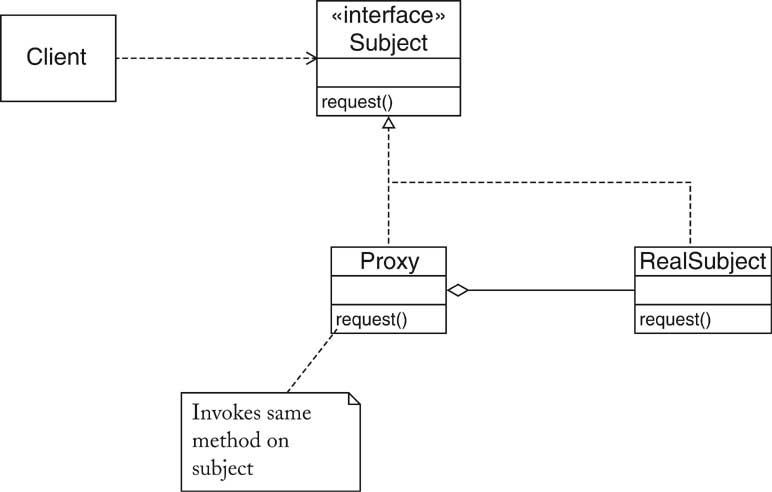
| The PROXY Pattern [32/55] |
| Name in
Design Pattern |
Actual Name
(image proxy) |
| Subject |
Icon |
|
RealSubject |
ImageIcon |
| Proxy |
ImageProxy |
|
request() |
The methods of the Icon
interface type |
| Client |
JLabel |
| Singletons [33/55] |
| Random Number Generator Singleton [34/55] |
public class SingleRandom
| The SINGLETON Pattern [35/55] |
| The SINGLETON Pattern [36/55] |
| Not a SINGLETON [37/55] |
| Inflexible Hierarchies [38/55] |
| Inflexible Hierarchies [39/55] |
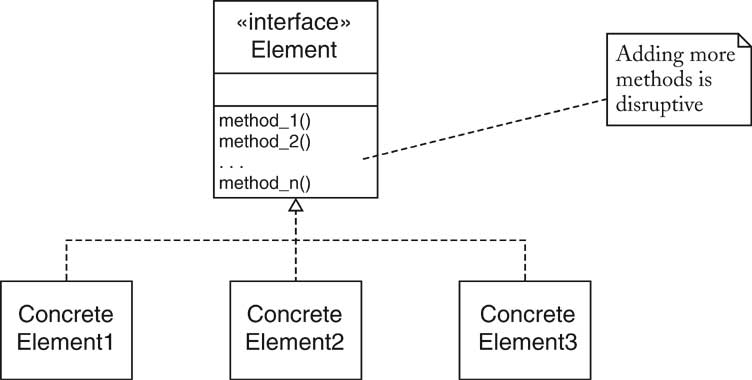
| Visitors [40/55] |
| Visitors [41/55] |
| Visitors [42/55] |
| Double Dispatch [43/55] |
| Visitor Example [44/55] |
| Visitor Example [45/55] |
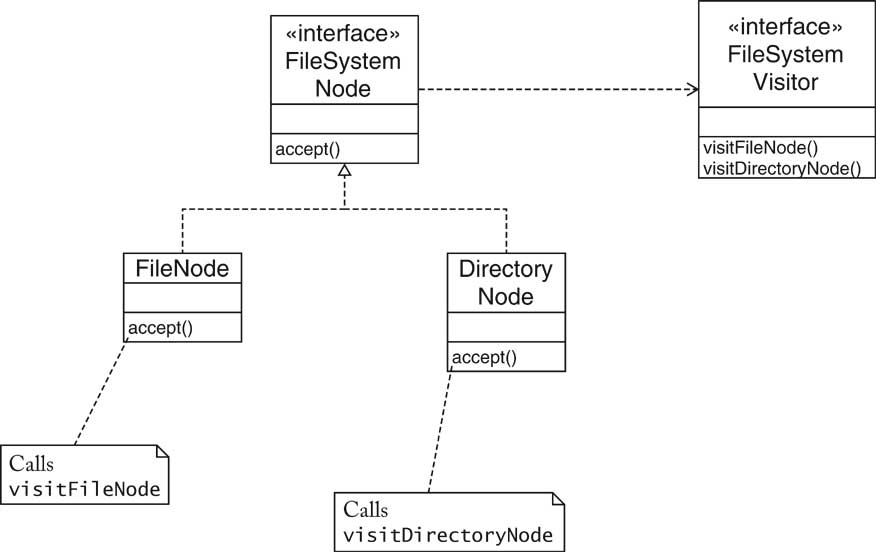
| Visitor Example [46/55] |
| Visitor Example [47/55] |
file:horstmann/ch10_visitor/FileSystemNode.java [source] [doc-public] [doc-private]
01
02
03
04
05
06
07
08
file:horstmann/ch10_visitor/FileNode.java [source] [doc-public] [doc-private]
01
02
03
04
05
06
07
08
09
10
11
12
13
14
15
16
17
18
19
file:horstmann/ch10_visitor/DirectoryNode.java [source] [doc-public] [doc-private]
01
02
03
04
05
06
07
08
09
10
11
12
13
14
15
16
17
18
19
20
21
22
23
24
25
26
27
28
29
30
31
32
33
34
file:horstmann/ch10_visitor/FileSystemVisitor.java [source] [doc-public] [doc-private]
01
02
03
04
05
06
07
08
09
10
11
12
13
14
15
16
17
18
file:horstmann/ch10_visitor/PrintVisitor.java [source] [doc-public] [doc-private]
01
02
03
04
05
06
07
08
09
10
11
12
13
14
15
16
17
18
19
20
21
22
file:horstmann/ch10_visitor/VisitorTester.java [source] [doc-public] [doc-private]
01
02
03
04
05
06
07
08
09
10
11
| Double Dispatch Example [48/55] |
| Double Dispatch Example [49/55] |
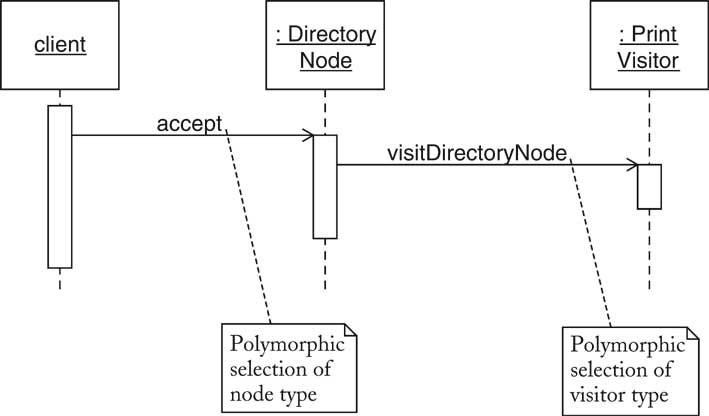
| The VISITOR Pattern [50/55] |
| The VISITOR Pattern [51/55] |
| The VISITOR Pattern [52/55] |
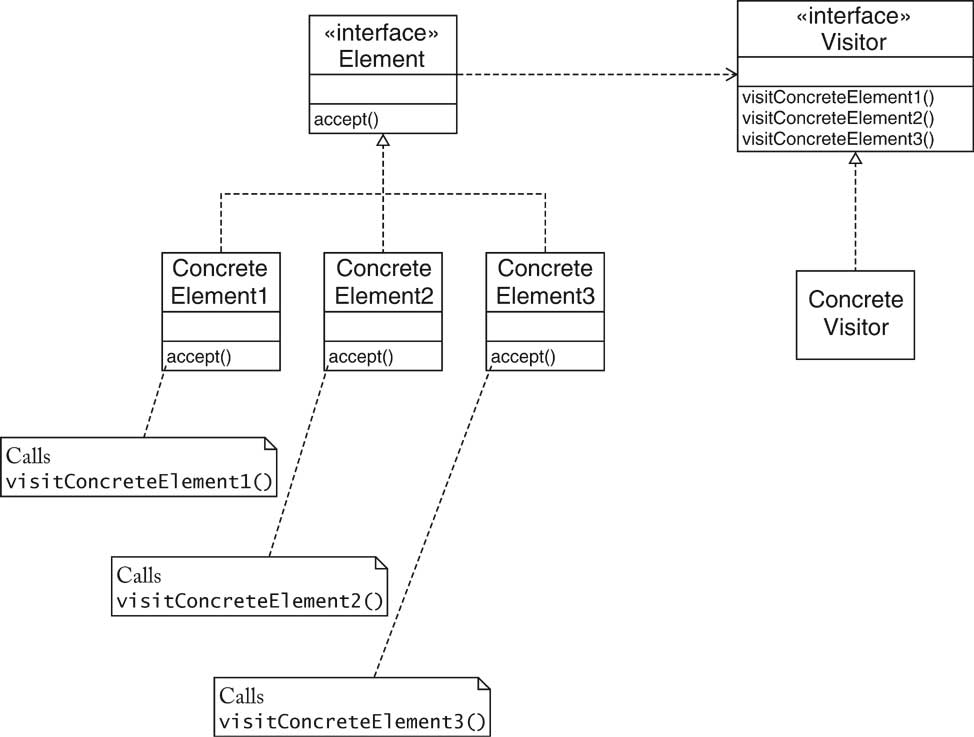
| The VISITOR Pattern [53/55] |
| Name in
Design Pattern |
Actual Name (file system
visitor) |
| Element |
FileSystemNode |
| ConcreteElement |
FileNode, DirectoryNode |
| Visitor |
FileSystemVisitor |
|
ConcreteVisitor |
PrintVisitor |
| Other Design Patterns [54/55] |
| Conclusion: What You Learned [55/55] |
Revised: 2007/09/11 16:42